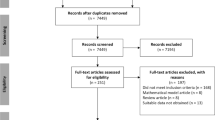Abstract
We reported previously (1) that mice of strain DBA/2J show superior performance on both an active and a passive learning task when trials are massed, while mice of strain C57BL/6J show superior performance on both tasks when trials are distributed and (2) that post-trial etherization can result in facilitation of learning performance of mice of strain DBA/2J but not of strain C57BL/6J. We further suggested that there might be a high functional relation between differences in performance under massed and distributed temporal conditions of practice and response to etherization. Specifically, we suggested that superiority under massed practice is associated with a facilitative response to post-trial etherization, while superiority under distributed practice is associated with lack of a facilitative response to etherization. This paper reports studies of the learning performances of two new strains, BDP/J and SJL/J, with massed and distributed trials and studies of the effects of etherization on, performance of these two strains for tasks on which they are superior under the distributed-practice condition. The possible relation of lack of ether facilitation to superior performance under the distributed-practice condition was not confirmed.
Similar content being viewed by others
References
Cherkin, A. (1968). Retrograde amnesia: Role of temperature, dose, and duration of amnesic agent.Psychon. Sci. 13: 255–256.
Falconer, D. S. (1960).Introduction to Quantitative Genetics, Ronald Press, New York.
Fuller, J. L., and Wimer, R. E. (1966). Neural, sensory, and motor functions. In Green, E. L., (ed.),Biology of the Laboratory Mouse, 2nd ed., McGraw-Hill, New York, p. 609–628.
Fuller, J. L., and Wimer, R. E. (1973). Behavior genetics. In Dewsbury, D., and Rethlingshafer, D. (eds.),Comparative Psychology: A Modern Survey, McGraw-Hill, New York.
McGaugh, J. L., Jennings, R. D., and Thomson, C. W. (1962). Effect of distribution of practice on the maze learning of descendants of the Tryon maze bright and maze dull strains.Psychol. Rep. 10: 147–150.
Thomson, C. W., mcGaugh, J. L., Smith, C. E., Hudspeth, W. J., and Westbrook, W. H. (1961). Strain differences in the retroactive effects of electroconvulsive shock on maze learning.Can. J. Psychol. 15: 69–74.
Wimer, R. E., Symington, L., Farmer, H., and Schwartzkroin, P. (1968). Differences in memory processes between inbred mouse strains C57BL/6J, and DBA/2J.J. Comp. Physiol. Psychol. 65: 126–131.
Winer, B. J. (1962).Statistical Principles in Experimental Design, McGraw-Hill, New York.
Author information
Authors and Affiliations
Additional information
These investigations were supported in part by Public Health Research Grant MH 11327.
This work was made possible in part by support from the Martin Stone Research Fund.
Rights and permissions
About this article
Cite this article
Wimer, R.E. Dissociation of a phenotypic correlation: Response to post-trial etherization and to variation in temporal distribution of practice trials. Behav Genet 3, 379–386 (1973). https://doi.org/10.1007/BF01070220
Received:
Accepted:
Issue Date:
DOI: https://doi.org/10.1007/BF01070220




